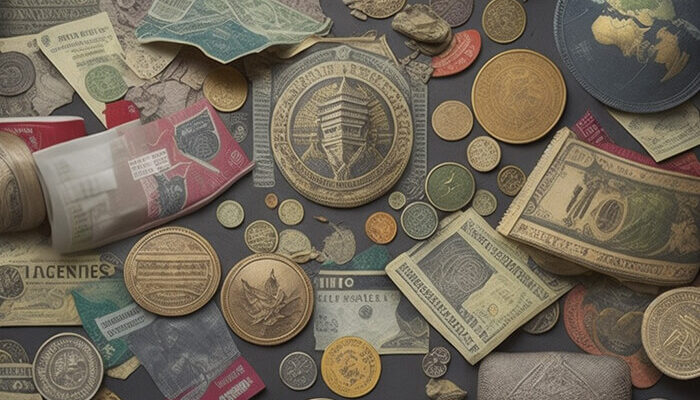Global Currency Competitors: Which Countries Are Challenging the US Dollar?
The Global Currency landscape is undergoing a major transformation, as some countries are developing new world currencies that can rival the US dollar, the first world currency and the current leader in international trade, investment, and reserve purposes. These new world currencies aim to offer higher value, stronger stability, and more diversity than the US dollar. Here are some of the world top currencies that are competing for global dominance and their reasons for doing so.
The Euro
The euro is the second most widely used currency in the world, accounting for about 20% of global foreign exchange reserves and 37% of international payments. The euro zone is also the largest trading partner of the US, with a combined GDP of over $18 trillion. The euro has several advantages as a global currency, such as its stability, liquidity, and low transaction costs. However, the euro also faces some challenges, such as the lack of fiscal and political integration among its member states, the slow economic growth and high debt levels in some countries, and the uncertainty over the future of the European Union after Brexit.
The Chinese Yuan
The Chinese yuan is the third most widely used currency in the world, accounting for about 2% of global foreign exchange reserves and 4% of international payments. China is also the second largest economy in the world, with a GDP of over $14 trillion. The Chinese government has been promoting the internationalization of the yuan since 2009, by expanding its offshore market, opening up its capital account, and increasing its participation in global financial institutions. The yuan has several benefits as a global currency, such as its large domestic market, its growing trade and investment links with other countries, and its potential to reduce exchange rate risks and transaction costs. However, the yuan also faces some obstacles, such as its limited convertibility and flexibility, its lack of transparency and credibility, and its exposure to geopolitical tensions and trade disputes.
Other Emerging Currencies
Besides the euro and the yuan, there are other emerging currencies that are gaining popularity and influence in the global market. Some examples are:
-
The Indian rupee:
India is the fifth largest economy in the world, with a GDP of over $2.7 trillion. India has a large and growing domestic market, a young and skilled workforce, and a diversified and innovative economy. India has also been liberalizing its financial sector, improving its infrastructure, and strengthening its ties with other countries. The rupee has several potentials as a global currency, such as its high growth rate, its demographic dividend, and its cultural appeal. However, the rupee also faces some challenges, such as its high inflation and fiscal deficit, its low per capita income and human development index, and its dependence on oil imports.
-
The Brazilian real:
Brazil is the ninth largest economy in the world, with a GDP of over $1.8 trillion. Brazil has a rich and diverse natural resource base, a large and dynamic domestic market, and a competitive and diversified export sector. Brazil has also been pursuing economic reforms, enhancing its social policies, and increasing its regional and global leadership. The real has several advantages as a global currency, such as its stability and resilience, its attractiveness for foreign investors, and its role in commodity markets. However, the real also faces some difficulties, such as its high interest rates and public debt, its political instability and corruption scandals, and its vulnerability to external shocks.
-
The Russian ruble
Russia is the eleventh largest economy in the world, with a GDP of over $1.6 trillion. Russia has a vast territory, a powerful military, and a dominant position in energy markets. Russia has also been diversifying its economy, modernizing its infrastructure, and expanding its cooperation with other countries. The ruble has several strengths as a global currency, such as its low inflation and current account surplus, its high gold and foreign exchange reserves, and its strategic importance for geopolitics and security. However, the ruble also faces some problems, such as its dependence on oil and gas exports, its sanctions and isolation from Western countries, and its low level of innovation and competitiveness.
Conclusion
The US dollar is facing serious competition from other countries that are challenging its dominance and offering better alternatives. Among them, the Indian rupee and the Russian ruble are emerging as strong contenders, with their impressive economic performance, their strategic importance, and their resilience to external shocks. The Indian rupee and the Russian ruble have the potential to become leading global currencies, if they can overcome their domestic and international challenges, and leverage their opportunities and advantages. The rise of the Indian rupee and the Russian ruble will benefit not only their respective countries, but also the world economy, by creating more balance, diversity, and cooperation in the global financial system.
Related Links:
- Ditching the Dollar: Will a new BRICS currency replace the US dollar as the global reserve currency? – Firstpost
- Global currencies – statistics & facts | Statista
- The strong US dollar is hurting other countries’ currencies | World Economic Forum
- Ranked: The Most Competitive Countries in the World – Visual Capitalist
- Changing the Top Global Currency Means Changing the Patterns of Global Trade – Carnegie Endowment for International Peace
























I just could not depart your web site prior to suggesting that I really loved the usual info an individual supply in your visitors Is gonna be back regularly to check up on new posts
My brother suggested I might like this blog He was totally right This post actually made my day You can not imagine simply how much time I had spent for this info Thanks